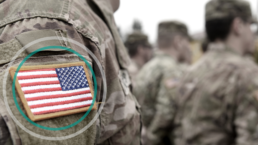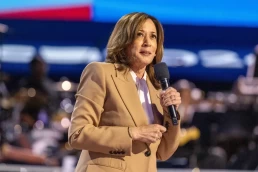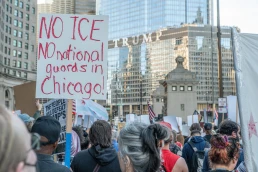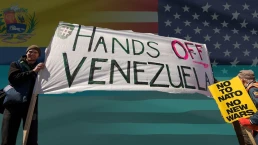In the United States, at least 32% of male mass shooters under 60 (which is almost all mass shooters) are military veterans.
By David Swanson, Let’s Try Democracy
Two U.S. military veterans allegedly shot and killed at least three people each this past weekend, Thomas Jacob Sanford in Michigan, and Nigel Max Edge in North Carolina. So, it is a safe bet that they will both be added (with, almost certainly, no mention of their status as veterans) to the database maintained by Mother Jones that I have for years been using as a starting point to track statistics on mass shootings.

It’s been almost two years since I posted an update. In that time, Mother Jones has added seven mass shootings to its database. These two new ones will make nine. Of those other seven, one of the shooters — bizarrely, and I hope nobody gets reprimanded — is actually identified as a veteran by Mother Jones. Another of the seven was 14 years old and yet another was 67; they don’t factor into calculations about men under 60. Another was a veteran of an institution that uses the word “veteran” to associate itself with the military: football. He blamed his football injuries for his crime. He counts statistically as NOT a military veteran. In a quick internet search, I’ve been unable to identify any of the others as military veterans either, so will count them as non-veterans. But it’s worth noting that often in the past I’ve managed to find out about veteran status only after lengthy searching.
So, the data has now changed from 40 of 127 mass shooters (who are men under 60) being military veterans when last I wrote about this to now 43 of 134 mass shooters being military veterans. That’s 32%, up from 31%. That figure has been between 31% and 36% for as long as I’ve been doing these calculations
In the United States, only a very small percentage of men under 60 are military veterans.
In the United States, at least 32% of male mass shooters under 60 (which is almost all mass shooters) are military veterans.
As I reported in June 2023, a University of Maryland report touching on this topic was virtually ignored by media outlets.
But here are the facts:
Looking at males, aged 18-59, veterans are well over twice, maybe over three times as likely to be mass shooters compared with the group as a whole. And they shoot somewhat more fatally.
The numbers have changed slightly since I began writing about this:
- October 28, 2023: ABC News Report Claims No Past Mass Shooters Have Been Veterans; At Least 31% Have Been
- October 26, 2023: At Least 31% of Mass Shooters Were Trained to Shoot by the U.S. Military
- May 10, 2023: At Least 32% of U.S. Mass Shooters Were Trained to Shoot by the U.S. Military
- March 23, 2021: At Least 36% of Mass Shooters Have Been Trained By the U.S. Military
- June 4, 2019: Updated Data: Mass Shooters Still Disproportionately Veterans
(At this point it was 35%) - November 4, 2018: Mass Shooters’ Histories in the U.S. Military Most Amazing Coincidence
(At this point it was 35%) - November 14, 2017: U.S. Mass Shooters Are Disproportionately Veterans
(At this point it was 34%)
The training and conditioning and arming of shooters is of far less interest to media outlets than “motivation,” but what we should actually know about shooters’ ideology is not unrelated to the disproportionate presence of military veterans in the list of mass shooters. These are people who have been armed and trained and conditioned at public expense and then generally thanked for the supposed service of what they’ve done when it has not yet included shooting any of the wrong people.
All sorts of correlations are carefully examined when it comes to mass shooters. But the fact that the largest institution in the United States has trained many of them to shoot is scrupulously avoided.
Many of those mass shooters who are not military veterans tend to dress and speak as if they were. Some of them are veterans of police forces with military-sounding titles, or have been prison guards or security guards. Counting those who’ve been in either the U.S. military or a police force or a prison or worked as an armed guard of any kind would give us an even larger percentage of mass shooters to consider. The factor of having been trained and employed to shoot is larger than just the military veterans, yet carefully ignored by every single U.S. corporate media outlet (that sounds like an exaggeration, but can you prove it wrong?).
Some of the non-military mass-shooters have worked as civilians for the military. Some have tried to join the military and been rejected. The whole phenomenon of mass-shootings has skyrocketed during the post-2001 endless wars. The militarism of mass-shootings may be too big to see, but the avoidance of the topic is stunning.
Needless to say, out of a country of over 330 million people a database of 134 mass shooters is a very, very small group. Needless to say, statistically, virtually all veterans are not mass shooters. But that can hardly be the reason for not a single news article ever mentioning that mass shooters are very disproportinately likely to be veterans. After all, statistically, virtually all males, mentally ill people, domestic abusers, Nazi-sympathizers, loners, and gun-purchasers are also not mass-shooters. Yet articles on those topics proliferate like NRA campaign bribes.
There seem to me to be two key reasons that a sane communications system would not censor this topic. First, our public dollars and elected officials are training and conditioning huge numbers of people to kill, sending them abroad to kill, thanking them for the “service,” praising and rewarding them for killing, and then some of them are killing where it is not acceptable. This is not a chance correlation, but a factor with a clear connection.
Second, by devoting so much of our government to organized killing, and even allowing the military to train in schools, and to develop video games and Hollywood movies, we’ve created a culture in which people imagine that militarism is praiseworthy, that violence solves problems, and that revenge is one of the highest values. Virtually every mass shooter has used military weaponry. Most of those whose dress we are aware of dressed as if in the military. Those who’ve left behind writings that have been made public have tended to write as if they were taking part in a war. So, while it might surprise many people to find out how many mass shooters are veterans of the military, it might be harder to find mass shooters (actual veterans or not) who did not themselves think they were soldiers.
There seems to me to be one most likely reason that it’s difficult to find out which shooters have been in the military (meaning that some additional shooters probably have been, about whom I’ve been unable to learn that fact). We’ve developed a culture dedicated to praising and glorifying participation in war. It need not even be a conscious decision, but a journalist convinced that militarism is laudable would assume it was irrelevant to a report on a mass shooter and, in addition, assume that it was distasteful to mention that the man was a veteran. That sort of widespread self-censorship is the only possible explanation for the complete whiting out of this story.
The phenomenon of shutting down this story does not exactly require a “motive,” and I would like to recommend to reporters on mass shootings that they, too, devote a bit less energy to the often meaningless hunt for “a motive,” and a tad more to considering whether the fact that a shooter lived and breathed in an institution dedicated to mass shooting might be relevant.
UPDATE SEPTEMBER 29, 2025:
Shockingly, CBS News did one article on this topic two years ago. Here it is. The seven people who wrote it used a database from the Violence Project and did not separate out men or men of any particular age. They concluded that 26% of mass shooters were veterans, as compared to 7% of all people. In other words, a mass shooter is over 3 times as likely to be a veteran.
It’s always seemed more relevant to me to remove the very few mass shooters who are female or young or old, and then compare to 18-59-year-old men in the general population. The closest I can come to putting an exact number on that is like this. The U.S. Census says that in 2024, males 19-59 were 88,300,644 or 25.96% of the population. (This is imperfect because it looks at only one year, because it is an estimate, because it leaves out 18 years olds, and because it includes non-citizens who were not eligible for or did not live in the United States at the age for being in the U.S. military.) According to the Department of Veterans Affairs, of men aged 20-59 (so, missing 18-19-year-olds), 6,565,138 as of 2024 were veterans. That’s 7.43% of all men aged 19-59. If we compare 32% with 7%, mass shooters are over 4.5 times more likely to be veterans.
Recent Posts
Why is the Democratic party hiding its 2024 autopsy report?
December 30, 2025
Take Action Now If the DNC isn’t open and transparent about why they lost, then how can we be sure they will learn their lesson this time?By…
Anti-ICE Resistance Sprang Up Across Red States In 2025
December 29, 2025
Take Action Now In Texas, North Carolina, Alabama, Tennessee, Florida, and beyond, grassroots resistance to ICE is growing.By Sonali Kolhatkar,…
Trump Suggests US Bombed ‘Big Facility’ in Venezuela. No One Seems to Know What He’s Talking About
December 29, 2025
Take Action Now Administration officials have yet to provide any details about the supposed strike, which would mark a massive escalation in the…
Nigerian Village Bombed by Trump Has ‘No Known History’ of Anti-Christian Terrorism, Locals Say
December 28, 2025
Take Action Now “Portraying Nigeria’s security challenges as a targeted campaign against a single religious group is a gross misrepresentation of…




